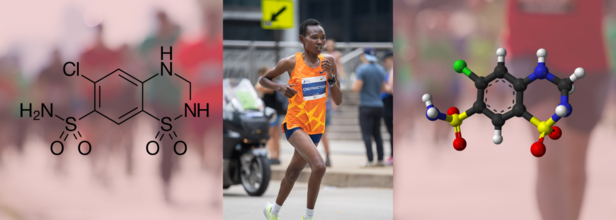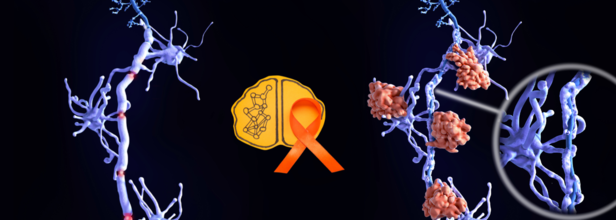- Health Conditions A-Z
- Health & Wellness
- Nutrition
- Fitness
- Health News
- Ayurveda
- Videos
- Medicine A-Z
- Parenting
- Web Stories
“It’s Not How Old You Are, It’s How You Are Old”: Rethinking Cancer Care for the Elderly

When an elderly individual is diagnosed with cancer, families often find themselves in a difficult position. The fear in individuals from aggressive treatment, surgical risks and a long recovery period makes many hesitant to proceed even in the cases where the cancer begins in the early stages.
Understandably, the idea of putting an elderly patient through such a physically and emotionally demanding experience can feel overwhelming. However, in modern medicine, age alone should not be the deciding factor when making cancer treatment decisions.
Chronological Age vs. Biological Age
Dr. Karthik K. Prasad, Lead Consultant, Surgical Oncologist at Sparsh Hospital, Yeshwanthpur, draws a clear distinction between chronological and biological age.
“Chronological age can be defined as the number of years the person has lived. Whereas the biological age, on the other hand, is all about how well the body is functioning,” he says. Biological age, he adds, is influenced by several factors, including lifestyle, mental health, environmental exposures and genetics.
He notes that many individuals in their 70s and 80s lead active, healthy lives and are very much capable of recovering from surgery. “Those patients who are young and suffering from many medical problems may also struggle with the same treatment,” he points out, reinforcing that functionality matters more than the age listed on paper.
Fitness and Functionality Matter
“In the world of modern oncology, medical decisions are mainly guided by the performance status of patients,” says Dr. Prasad. This performance status is a clinical evaluation of how independently a person can carry out daily physical activities.
“If the patient has good organ function, then they are very much suitable candidates for the surgery or any other form of medical treatment,” he adds. He also emphasises the importance of early treatment. “Early-stage cancer is very curable, especially in a fit elderly patient,” he states. “Avoiding the treatment and delayingthe treatment can also lead to progression and limit the future treatment options as well.”
Preparation and Recovery
Cancer surgeries in older adults are seldom urgent, Dr. Prasad explains, which allows ample time for proper preparation. “This also provides enough time to prepare the patient by providing them with an adequate amount of nutrition and offering the psychological support as well.”
While recovery may be slower for older patients, it is usually very possible with the right care. “With the proper care, such as physiotherapy, good nutrition, and emotional support, through which most of the people recover well,” he says. However, he cautions that success lies in meticulous planning. “The key element of the same lies in the pre- and post-operative planning of surgery.”
Changing the Narrative
Dr. Prasad believes that it’s time to break the stereotype that older patients are too fragile for treatment. “It is also true that age sometimes brings the added considerations, but it should not disqualify someone from getting a life-saving treatment,” he says.
He urges families and practitioners to move away from age-based decision-making. “Every decision regarding the medical treatment should be individualised by considering the overall health of the patient, not just only their age.” His message is clear and strong: “In today’s medical world we should only treat people, not their age numbers.”
For Dr. Prasad, both healthy and elderly patients with early-stage cancer “deserve the equal opportunity for getting a cure”. Age, he stresses, “should not stand as the factor in the way of effective treatment and proper assessment; preparation should be adopted.”
You Are Starting Your Day All Wrong! A Neuroscientist Reveals The 20-Minute Morning Tweak That Could Unlock Your Creativity, Motivation And Focus

Checking our phone as soon as we wake has become a new normal, leaving far behind good old healthy practices like yoga, stretching, reading a newspaper or simply relaxing on the balcony. What has become a habit now is to reach for our phone before we have even fully opened both eyes. Scroll through Instagram, check the news, peep your inbox, maybe? So nobody is alone in this. But according to this neuroscientist, your brain hates this. Yes, hates!
Your Brain’s Morning Superpower
The moment you wake up, your brain enters what Dr. Wendy Suzuki, a neuroscientist and Dean of the College of Arts and Sciences at New York University, calls peak neuroplastic mode, meaning it is in its most malleable, adaptable, and brilliant state, ready to learn, problem-solve and innovate.
“You have been starting your day out all wrong, and your brain hates it. If your first move in the morning is checking your phone, your brain misses out on its most powerful window of the day. Right after waking up, your brain is in peak neuroplastic mode,” she says in a video shared on Instagram.
Along with this neuroplasticity boost, your brain also experiences a natural rise in dopamine and cortisol levels in the early hours. Dopamine and cortisol (in their optimal, non-stress-inducing doses) help sharpen your focus, increase creativity, and get you mentally primed for the day.
But the moment you expose your just-woken-up brain to a screen, that power surge gets zapped.
Screens Hijack Your Mind
You know that itchy, anxious feeling you sometimes get after doomscrolling in bed? That is no coincidence. Dr. Suzuki says dopamine and cortisol are naturally high, giving you a boost in motivation, creativity, and focus. But screens hijack that potential.
By checking emails or diving into social media, you are handing over the reins of your brain’s agenda to external noise like other people’s updates, demands, and drama. Instead of using that precious cognitive spike for yourself, you are giving it away. Think of it as spending the best part of your mental energy budget on junk.
The 20-Minute Reset Experiment
Do not worry; Dr. Suzuki is not asking you to throw your phone away. The fix is refreshingly simple. Just delay screen time by 20 minutes. No fancy apps, no complicated rituals. Just give your brain a 20-minute grace period to breathe, stretch, and be.
"For the next five mornings, delay screen time by just 20 minutes. Instead, stretch. Write down three things you want to focus on or just sit with your coffee and your thoughts. Watch what happens when you give your brain space to lead," she says.
Sounds easy, right? But do not underestimate the impact. Those 20 minutes could become the most productive part of your day. They can set the tone for intentional action instead of reaction.
Make Your Brain the Boss of Your Morning
Tomorrow, when your alarm goes off, resist the twitchy urge to swipe. Let your brain stretch its legs first. Stretch your body, jot down your day’s top three priorities, or just sit still and sip your morning brew.
Ruth Chepngetich Suspended As Her Dope Test Found Increased Levels Of HCTZ That Dilutes Other Drugs From Being Detected

Credits: Wikimedia Commons
In a major blow to the athletics world, Ruth Chepngetich, the women’s marathon world record holder, has been provisionally suspended after testing positive for a banned substance. The Athletics Integrity Unit (AIU) made the announcement on Thursday, July 17, sending ripples across the global running community.
The 30-year-old Kenyan runner, who has been hailed as one of the most dominant figures in long-distance running, now finds her illustrious career under intense scrutiny.
What Is the Drug Behind the Ban?
Chepngetich tested positive for hydrochlorothiazide (HCTZ), a diuretic commonly used in medicine to treat conditions such as high blood pressure and fluid retention.
While HCTZ is not a performance-enhancing drug, it is classified as a prohibited substance by the World Anti-Doping Agency (WADA) due to its potential use as a masking agent.
HCTZ increases urine output, which can dilute the concentration of other substances in the urine, including performance-enhancing drugs, making them harder to detect. This is why it remains under strict monitoring in competitive sports.
Chepngetich’s sample, collected on March 14, 2025, reportedly showed an HCTZ concentration of 3,800 nanograms per millilitre, dramatically higher than the WADA threshold of 20 ng/mL. This has raised immediate red flags for potential misuse.
Under Scrutiny
Before this suspension, Ruth Chepngetich’s career had been nothing short of phenomenal. She captured global attention in October 2024 when she smashed the women’s marathon world record at the Chicago Marathon, clocking in at 2:09:56, nearly two minutes faster than the previous record held by Ethiopia’s Tigst Assefa. It was her third Chicago Marathon victory, reinforcing her status as a marathon titan.
Chepngetich’s reputation was also built on her grit, especially visible during her gold medal win at the 2019 World Championships in Doha, where she overcame brutal midnight heat to win the marathon. These performances had elevated her to the status of a national icon in Kenya, a country with a rich tradition in long-distance running.
However, the doping revelation now casts a shadow over those accomplishments and has triggered broader concerns about doping in elite marathons.
Investigation Timeline and Next Steps
According to the AIU, Chepngetich was notified of her positive result on April 3, 2025. While she wasn’t immediately banned, she voluntarily accepted a provisional suspension on April 19 as the investigation began.
“Chepngetich was not provisionally suspended by the AIU at the time of notification; however, on 19 April, she opted for a voluntary provisional suspension while the AIU’s investigation was ongoing,” said Brett Clothier, Head of the AIU.
On July 17, the AIU formally issued a Notice of Charge and imposed its own provisional suspension, pending further action.
Chepngetich now has the right to challenge the findings and present her defense before a Disciplinary Tribunal.
If the charges are upheld, she could face a ban of up to two years, depending on whether the tribunal finds aggravating circumstances or any prior infractions.
While Chepngetich’s case is still under review, it adds to a troubling pattern that could shake public trust in elite sports. Her legacy — once built on speed, stamina, and triumph — now hangs in the balance.
New Oral Treatment Offers Hope For MS Patients Battling Muscle Spasticity

Credits: Canva
For many individuals living with multiple sclerosis (MS), muscle spasticity, an often painful and limiting symptom, can be one of the most persistent and frustrating aspects of the disease. Characterized by stiff or tight muscles that resist movement, spasticity can interfere with basic activities like walking, dressing, or even sleeping. But an encouraging breakthrough may be on the horizon.
Researchers at the University of Cincinnati’s Gardner Neuroscience Institute are currently conducting a promising Phase 2 clinical trial for a new oral drug that targets the body’s endocannabinoid system, a natural internal mechanism that helps regulate muscle tone and relaxation. Rather than introducing an external muscle relaxant, this treatment is designed to enhance the body’s own ability to ease muscle stiffness by preventing the breakdown of naturally occurring compounds called endocannabinoids.
“Our goal is to find a treatment that’s not only effective, but also better tolerated during the day,” said Dr. Shahla Hosseini, MD, PhD, in a statement released by the university. “Most existing oral medications come with side effects like drowsiness or fatigue, which can significantly reduce a patient’s quality of life.”
How the New Drug Works
The new treatment under investigation inhibits specific enzymes that normally break down endocannabinoids in the body. These endocannabinoids function like the body’s natural muscle relaxers, but in people with MS, their levels tend to be low. By elevating endocannabinoid levels, the drug aims to restore better muscle control without the sedation that plagues current treatments.
This trial will involve approximately 200 participants from multiple international sites, making it a robust, multicenter effort. Over a period of six weeks, participants will be randomly assigned to receive one of three different doses of the study drug or a placebo. There’s also an optional six-week extension, which allows all participants to potentially receive the active drug and helps researchers compare the varying doses more effectively.
If successful, the trial could pave the way for a new class of medications to be used in tandem with current therapies like physiotherapy and botulinum toxin (Botox) injections. The drug’s oral format also means it could offer a non-invasive, easier-to-manage option for long-term symptom relief.
Broader Potential Beyond MS
While this trial is focused on MS-related spasticity, researchers are hopeful that the drug could eventually help individuals with other neurological disorders that impact muscle control, including spinal cord injuries, cerebral palsy, and stroke. This makes the study’s success particularly significant, not just for those with MS, but for a wider community of patients affected by similar conditions.
What is Multiple Sclerosis (MS)?
Multiple sclerosis (MS) is a chronic autoimmune disease that affects the central nervous system—including the brain and spinal cord. In MS, the immune system mistakenly attacks the protective sheath (myelin) that covers nerve fibers, disrupting the communication between the brain and the rest of the body. Over time, this can lead to nerve damage and deterioration.
Common Symptoms of MS:
- Muscle spasticity or stiffness
- Fatigue
- Difficulty walking or maintaining balance
- Vision problems (e.g., blurred or double vision)
- Numbness or tingling, especially in the limbs
- Cognitive difficulties
- Bladder and bowel dysfunction
- Pain or muscle cramps
Symptoms can vary widely depending on the area of the nervous system affected, and they often come and go in episodes known as relapses.
How is MS Diagnosed?
Diagnosing MS can be complex and typically involves a combination of:
- Neurological exams to assess reflexes, vision, coordination, and balance
- MRI scans to detect lesions or areas of demyelination in the brain or spinal cord
- Lumbar puncture (spinal tap) to examine cerebrospinal fluid for specific immune markers
- Evoked potential tests to measure electrical activity in response to stimuli
There’s no single test for MS, so diagnosis often involves ruling out other conditions with similar symptoms.
© 2024 Bennett, Coleman & Company Limited

